‘Distributed work’ and how it will impact employees and organisations
Advertisement
Experiences
'Distributed work' and how it volition impact employees and organisations
The pandemic has pushed employers to more flexible ways of working, and "distributed piece of work", which embraces a variety of spatial possibilities, appears to exist the most viable for many.
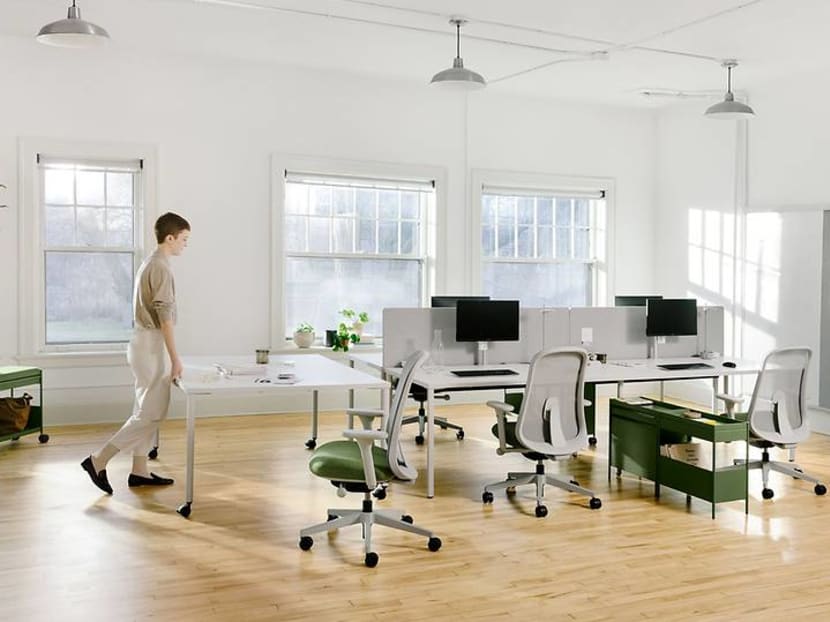
The shift to distributed work has had repercussions on spatial blueprint in offices. (Photo: Herman Miller)
31 May 2022 06:30AM (Updated: 10 Aug 2022 03:56PM)
The COVID-19 pandemic has made familiar and permanent many terms regarding workplace practices that were sidelined as optional scenarios. WFH (Work from Home), IRL (an acronym for In Existent Life, versus activities undertaken on digital platforms), WFA (Work from Anywhere), remote working and distributed piece of work are some of them.
What ties them together is their relation to a flexible mode of working that company leaders accept had to grapple with for their businesses to carry on amid pandemic isolation and minimal travel.
With mutated strains causing repeated lockdowns and ups-and-downs in instance numbers delaying a life dorsum to normal, the reality is that a hybrid model will become the new norm whether we like it or not, particularly amongst more highly skilled and well-educated workers in particular industries.
READ> Tired of virtual meetings? Even the CEO of Zoom has Zoom fatigue
"Profound change in the behaviour of organisations and individuals does not come up easily. The technology and digital connectivity that enables WFH has been bachelor for years, but it took a global pandemic for remote working to lose its stigma and for u.s. to brainstorm thinking virtually the broader implications of distributed work," said Nora Fehlbaum.
The CEO of Swiss article of furniture company Vitra – a forerunner of inventive workplace solutions – highlighted this in the outset session of Vitra Talks. The series of xc-minute digital seminars focusing on the futurity of work was held in March this year.

READ> Goodbye, offices: The good, the bad, and the ugly of the modern workplace
The topic Distributed Work was timely, considering how a big percentage of the global workforce in developed countries have had to piece of work from home or venues other than the office due to lockdowns. It differs from remote working in that the latter refers to a separate place of work for the private worker, while distributed work is an organisational model that sees workspaces spread intentionally across an array of spatial typologies – be information technology from home, a co-working location, or even a buffet.
The model embraces variations. It can be partially distributed with both on- and off-site employees, or fully distributed. Some employees may be stationed mainly in the role but work from habitation a few days a calendar week.
The basis is that regardless of identify, work can be done effectively, and the company offers support and resources for that to happen. This involves creating working conditions that are conducive, exist information technology in or out of the office, and that promotes the safety, well-being, productivity, creativity and personal development of employees.
"The engineering science and digital connectivity that enables WFH has been available for years, but it took a global pandemic for remote working to lose its stigma and for us to begin thinking about the broader implications of distributed work." – Nora Fehlbaum
READ> Smart, hybrid and personalised: Welcome to the post-pandemic workplace
The shift to distributed work has repercussions on spatial design in the affected venues. "At Vitra, nosotros believe that our environs shape our thoughts and feelings. Our interiors influence our every day. Spaces can shift corporate culture, lift spirits and impact our well-being," said Fehlbaum.
Products like Vitra's Soft Work modular sofa that accommodates both large and intimate groups, as well every bit the Dancing Wall mobile partition that can easily separate offices into zones or go green walls were designed along this mindset.
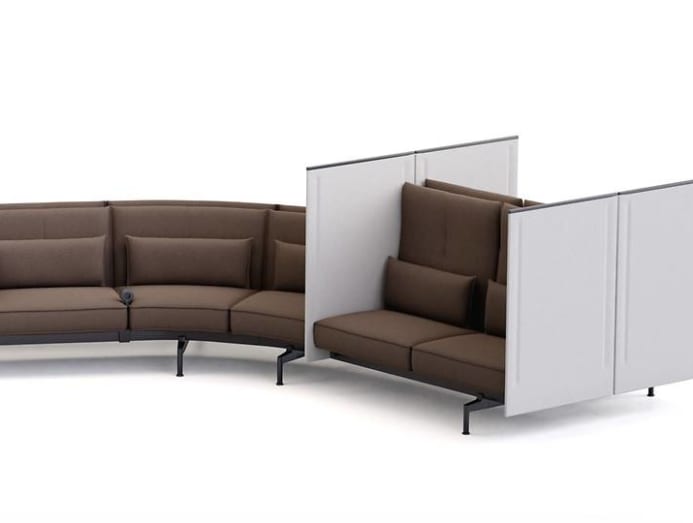
Research has shown that the office is still vital in seeding spontaneous discussions, which may atomic number 82 to artistic outcomes. The sense of camaraderie that builds a sense of belonging to the organisation is also hard to replicate when working alone.
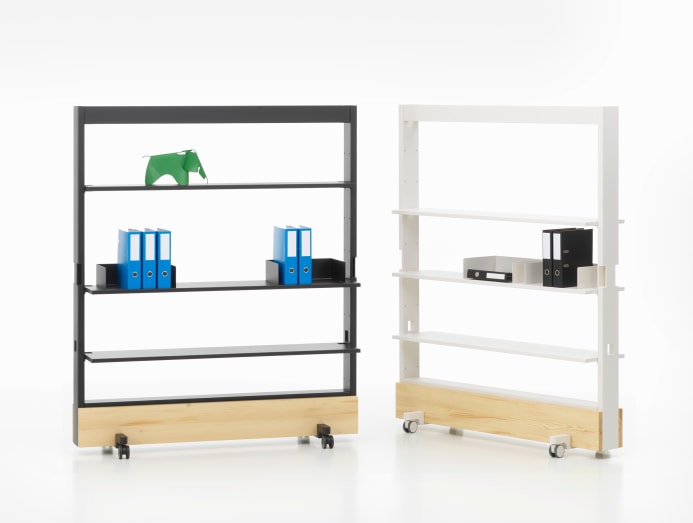
"In a fashion, the all-time offices are similar hospitable homes, but for our working selves, welcoming without existence overwhelming, providing some refuge, some conviviality, and a place, so to speak, to become from," said Gianpiero Petriglieri, an acquaintance professor of organisational behaviour at INSEAD and a speaker at the Vitra Talks session.
"Proficient leaders… try to cultivate cultures that foster a combination of autonomy and customs. You meet those efforts reflected in role culture. Some of usa, and some types of work require more solitude, others require more sociality, only in general when we can move between the two without much attempt, we tend to feel skillful," he added.
"In a manner, the best offices are like hospital homes, simply for our working selves, welcoming without being overwhelming, providing some refuge, some conviviality, and a place, so to speak, to go from." – Gianpiero Petriglieri
READ> How Singapore companies are taking care of their employees' mental wellbeing
Designers take as well had to answer similarly.
In the Anshu IBC @ Parkview Green Beijing part, builder and co-founder of Formwerkz Architects Gwen Tan incorporated touchscreens onto the pantry's central counter so that conversations and substitution of ideas can exist extended onto the digital platform even when ane is holding a coffee cup.
"Information technology can transform to adjust table-superlative games during pause times, as well every bit facilitate the presentation of sure data that is all-time studied at planar view," she said.
In the pattern of the library at ARCC co-working office's flagship location at One Marina Boulevard, which was completed final year, she specified Hay DLM lightweight side tables with handles that allow one to lift with i manus and move to a preferred location even if i's mobile telephone is placed on it, cheers to an upturned edge.
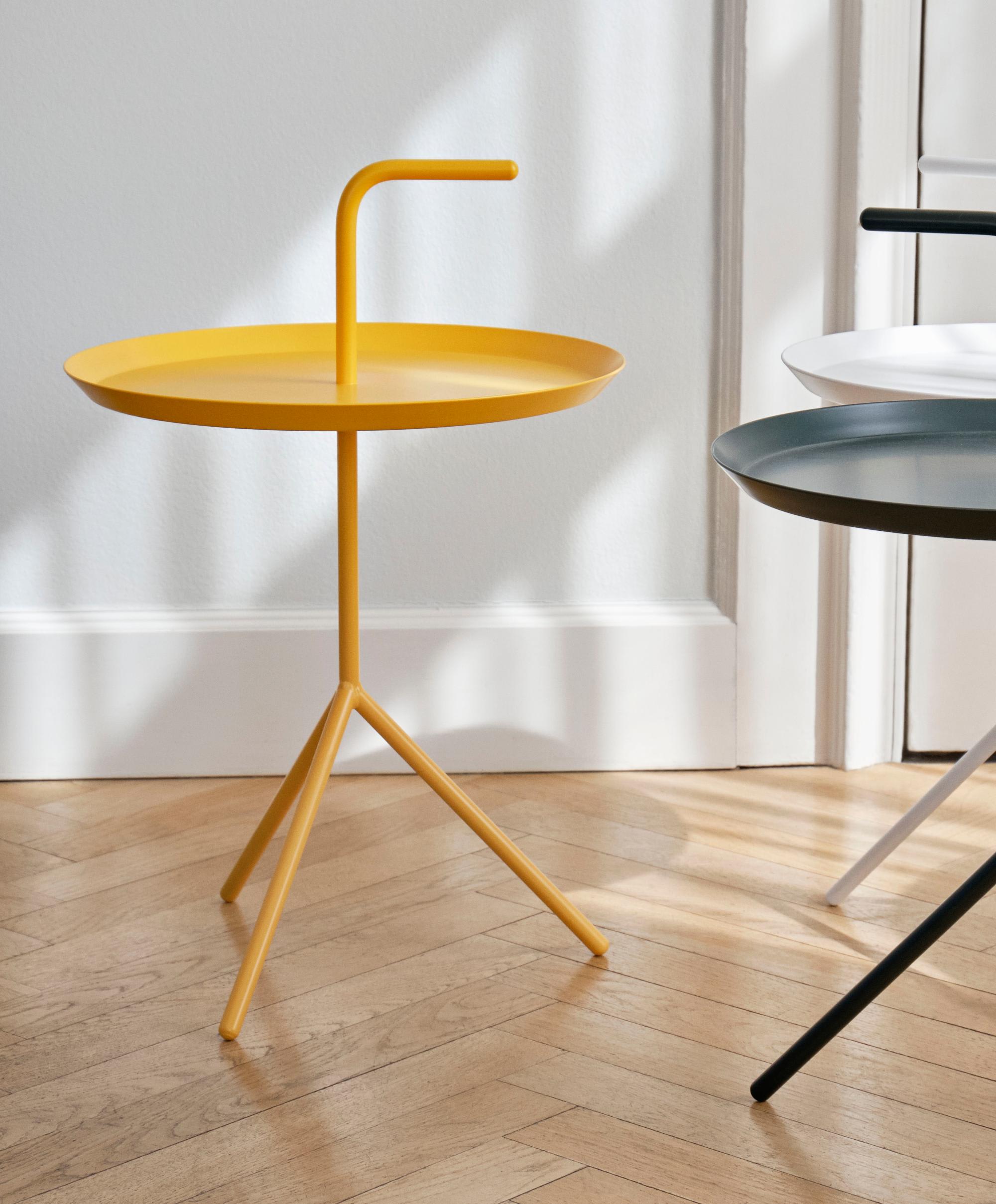
The co-working office is an fantabulous poster child of agile working. Employers seeking business continuity plans to meet prophylactic distancing measures looked to satellite locations such every bit these to offer staff rostered to work from home an alternative venue. At the same time, the hot-desking pick was ideal for workers who needed an immediate work infinite away from the hubbub of home.
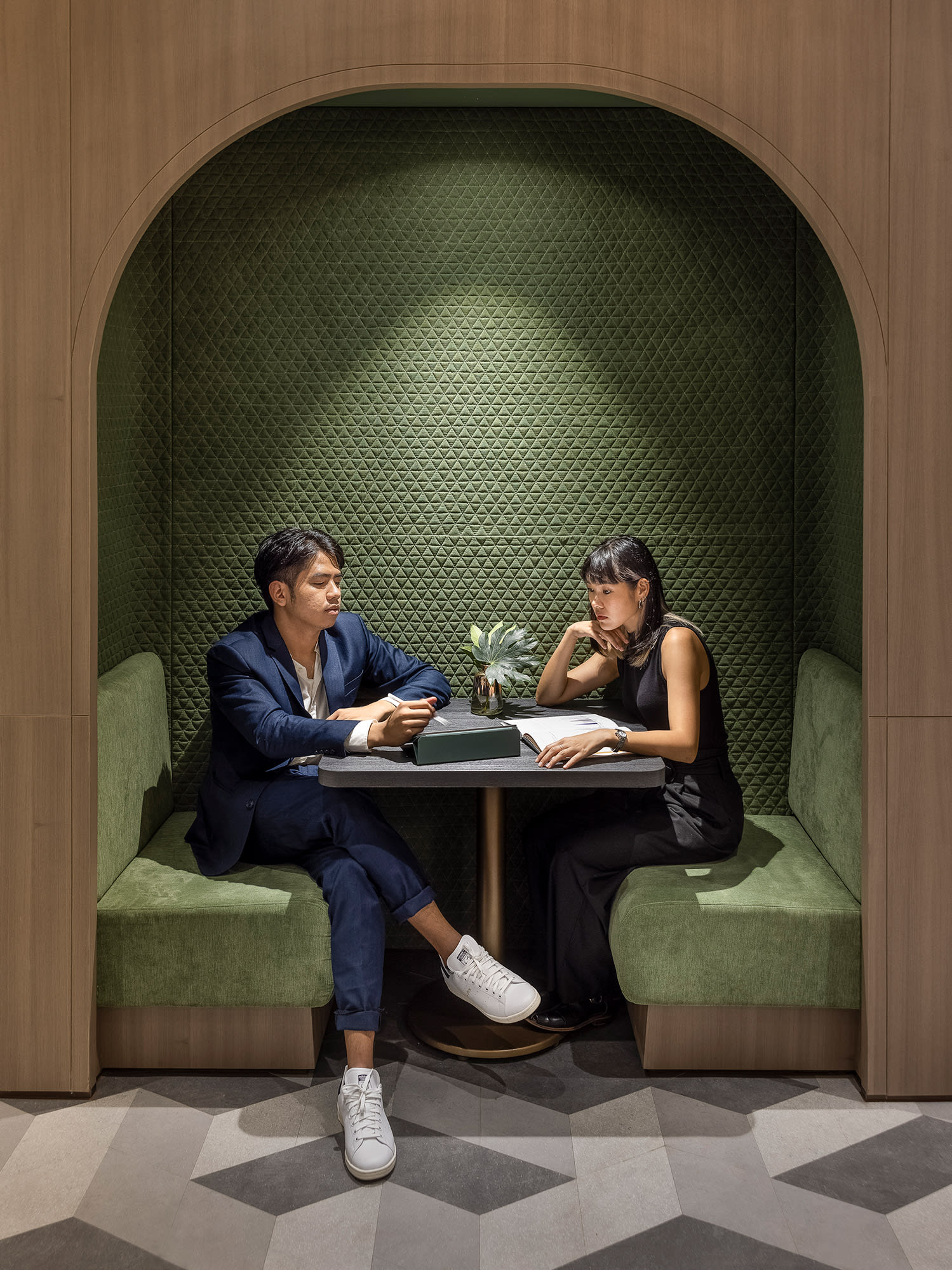
READ> This refurbished space in Orchard Route is basically an office set in a garden
"We have been relying on technology for the by six years or so. This pandemic has accelerated the employ of it not only in work styles, but also in our daily lives," said Tatiana Gomez, workplace consultant at Herman Miller.
The domicile setting saw many workers outfitting their homes and study rooms to replicate effective office design solutions, such as with ergonomic office chairs and adaptable tables that support both sitting and standing heights. Herman Miller'southward new OE1 collection responds to this. Information technology adapts to any existing or new scenario regardless of calibration, such as an impromptu office hallway or a modest study room in the dwelling, and will be bachelor in the Asia-Pacific at the cease of 2021.
Micro Packs is a elevation-adaptable table in a small footprint – many such tables are larger sized – that tin can be used as an individual workstation, in a three-way collaborative configuration of a typical four-way office cluster; Storage Trolleys is a moveable accessories unit of measurement which has an upholstered top that doubles as a seat for colleagues when they come up over.
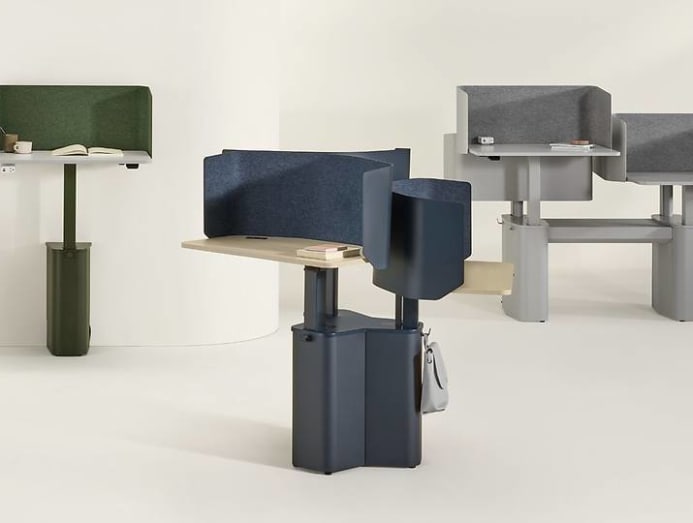
Previously many office products have been designed to address only one or 2 issues at a time. "Information technology is a great example of an innovative product line that responds to the demand for distributed work and everything that volition be important in the new workplace – adjustability, hybrid work, inherent flexibility, playfulness, smaller-scaled neighbourhoods and choice," said Gomez.
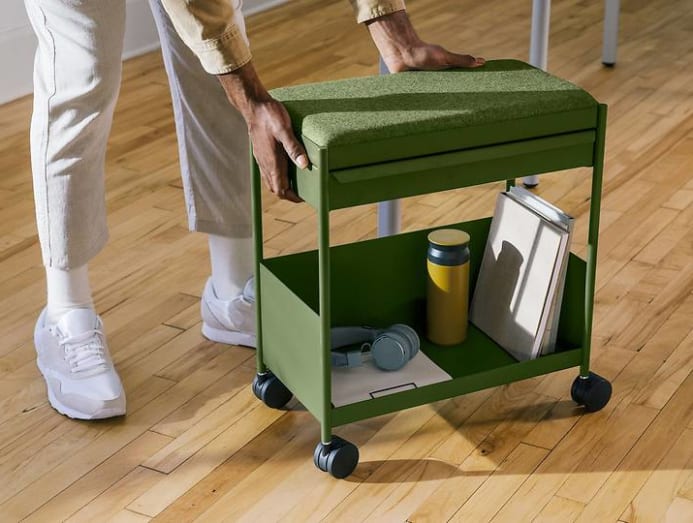
Source: https://cnalifestyle.channelnewsasia.com/experiences/office-culture-distributed-work-vitra-talks-wfh-wfa-singapore-270516
0 Response to "‘Distributed work’ and how it will impact employees and organisations"
Post a Comment